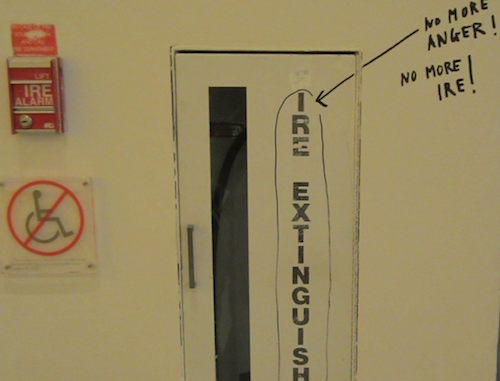
Every now and then you walk into a gallery and think wow, what an unique show! This happened to me at the ICA in Philadelphia when I entered the upstairs galleries and started looking around the pictures, interactive displays, videos and images. For a start Stefan Sagmeister has drawn on the walls. There is an immediacy to the writing that you do not get with the carefully placed notices of more typical exhibitions.
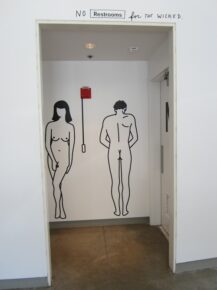
Sagmeister is an Austrian graphic designer who lives in New York. He has worked with many big names and is best known for his album covers for bands such as Lou Reed and The Rolling Stones. He worked for Tibor Kalman’s M&Co before launching Sagmeister Inc.
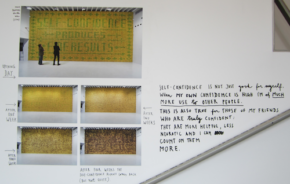
He has written best selling books, won awards and Emmys and is, it appears, an all round good guy. This exhibition examines his ten year exploration of happiness.

Happiness seems to be the aim of everyone yet very few people seem to attain it.
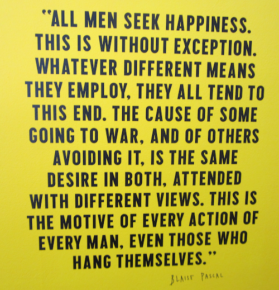
Sagmeister uses himself as an object to study, analysing his feelings and working through his thesis – can you train yourself to be happy in the same way you can train your body to be stronger?
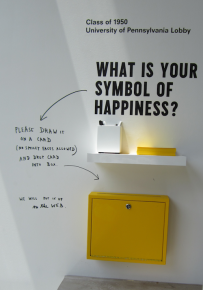
Would we have richer lives if we took more risks? Sagmeister investigates this by forcing himself to undertake things he doesn’t want to do – giving strangers compliments and flowers – and seeing if it raises his his well-being. He gave himself weekly ratings and it seemed to be true – the more risks he took the happier he was. Asking where someone got their coffee from, asking the taxi driver to turn down the radio – he proved that having guts worked out for him, a message that everyone can take from the show.
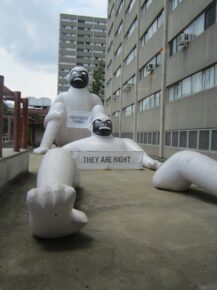
Sagmeister recommends that everyone keeps a diary, to look back and see how you felt and be able to notice changes in yourself. He notes that the so-called deep thinkers have generally looked at happiness as shallow.

But he also analyses love, with a large display that looks at how love affects happiness and changes over time.

Happiness seems an illusory target that most people dream of but do not achieve. Through many other diagrams, videos and wall-pieces Sagmeister analyses the make up of happiness and finds much that does not add to human happiness. It is his forcing of himself to take risks that appears to bring the biggest change to his feelings, which is a challenge to everyone who sees the show.

Leave a Reply